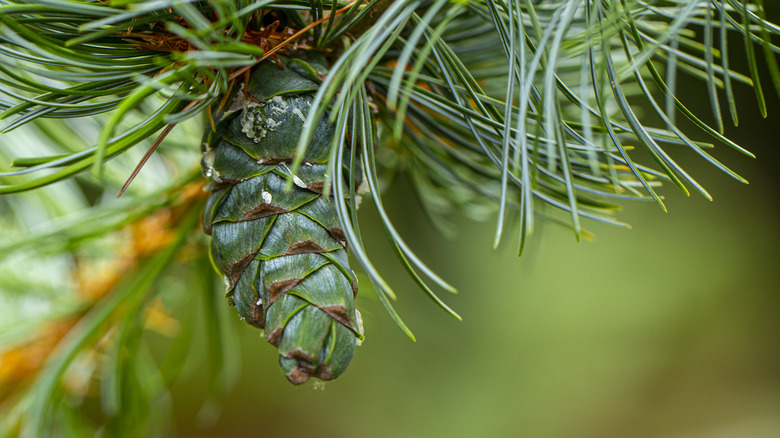Yup, Plants Can Sneeze (And Spread Diseases!)
When you see plants stuck in the soil and unable to escape their environments, it's easy to forget some of the similarities they have with animals.
For instance, one thing that plants and animals have in common is their ability to spread diseases to members of their own species. Researchers at Virginia Tech recently studied the ability of plants to spread wheat leaf rust through a phenomenon similar to sneezing.
Sneezing Plants and Jumping Spores
Sneezing
Plants and Jumping Spores
When a person sneezes, the droplets can spread diseases. It turns out that plants have a somewhat similar problem. However, the main difference is that plants sneeze because of fluid dynamics. Researchers at Virginia Tech studied condensation on wheat leaves and learned that the plants could "sneeze" and spread spores of wheat leaf rust.
Scientists noticed that putting small drops of water on the wheat leaves caused the liquid to merge and form a larger drop. This happened because the leaves are hydrophobic, or repel water. As the drop coalesced, kinetic energy was released. The energy allowed the water to jump into the air, which was similar to sneezing!
The water droplets contained spores from wheat leaf rust. The "sneeze" was enough to spread these pathogens to other wheat plants. The wind could also carry the small droplets to plants that were in other areas.
It's important to note that these processes were happening on a microscopic level, so you wouldn't be able to see them without a microscope. The droplet of water was about 50 micrometers and jumped 2 to 5 millimeters into the air after the plant sneezed.
Wheat Leaf Rust and Crops
Wheat
Leaf Rust and Crops
Wheat leaf rust is a fungus that also attacks rye and barley. It causes crop losses of 20 percent or higher. One of the ways the fungus spreads is though wheat leaves that release more spores into the air. Even when the leaves die, their decay provides nutrients for the fungus. Being able to control or eliminate wheat leaf rust would benefit farmers in the United States and other countries.
Researchers at Virginia Tech discovered that sneezing plants could release 100 spores into the air every hour. They pointed out that their experiment mimics the dew that naturally forms on crop leaves, so it is easy to see how diseases can spread among fields. During the next phase of the experiment, they want to see how far the wind and air can carry the droplets.
Changing Leaves and Crops
Changing
Leaves and Crops
Scientists are curious to see if changing the hydrophobic status of plant leaves could protect them. For instance, you could spray wheat and other crops with a substance that could alter their leaves. Researchers speculate that the dew would stay on the leaves, and plants would stop sneezing or spreading pathogens.
Although this may solve the sneezing problem and slow down the spread of pathogens like wheat leaf rust, it would not eliminate all plant diseases. Spore transmission by sneezing plants is not the only way diseases spread. For example, grafting sick branches and insects can also spread pathogens.
There are dangers that come with modifying the natural hydrophobic state of plant leaves. First, being able to repel large amounts of water protects the plants. Second, the ability of water to roll down a leaf, without sticking to it, means water can collect dirt and other things while falling off the plant. It's the perfect self-cleaning system that doesn't require extra energy from the plant.
It's important to consider the consequences of changing leaf surfaces before trying to stop plants from sneezing. Solving one problem can lead to new, unexpected issues.
References
- EurekAlert: 'Sneezing' Plants Contribute to Disease Proliferation
- Journal of the Royal Society Interface: 'Sneezing' Plants: Pathogen Transport Via Jumping-Droplet Condensation
- ScienceNews: 'Sneezing' Plants May Spread Pathogens to Their Neighbors
- Scientific American: Wheat Plants "Sneeze" and Spread Disease
Cite This Article
MLA
Bandoim, Lana. "Yup, Plants Can Sneeze (And Spread Diseases!)" sciencing.com, https://www.sciencing.com/yup-plants-can-sneeze-and-spread-diseases-13721195/. 26 August 2019.
APA
Bandoim, Lana. (2019, August 26). Yup, Plants Can Sneeze (And Spread Diseases!). sciencing.com. Retrieved from https://www.sciencing.com/yup-plants-can-sneeze-and-spread-diseases-13721195/
Chicago
Bandoim, Lana. Yup, Plants Can Sneeze (And Spread Diseases!) last modified March 24, 2022. https://www.sciencing.com/yup-plants-can-sneeze-and-spread-diseases-13721195/
